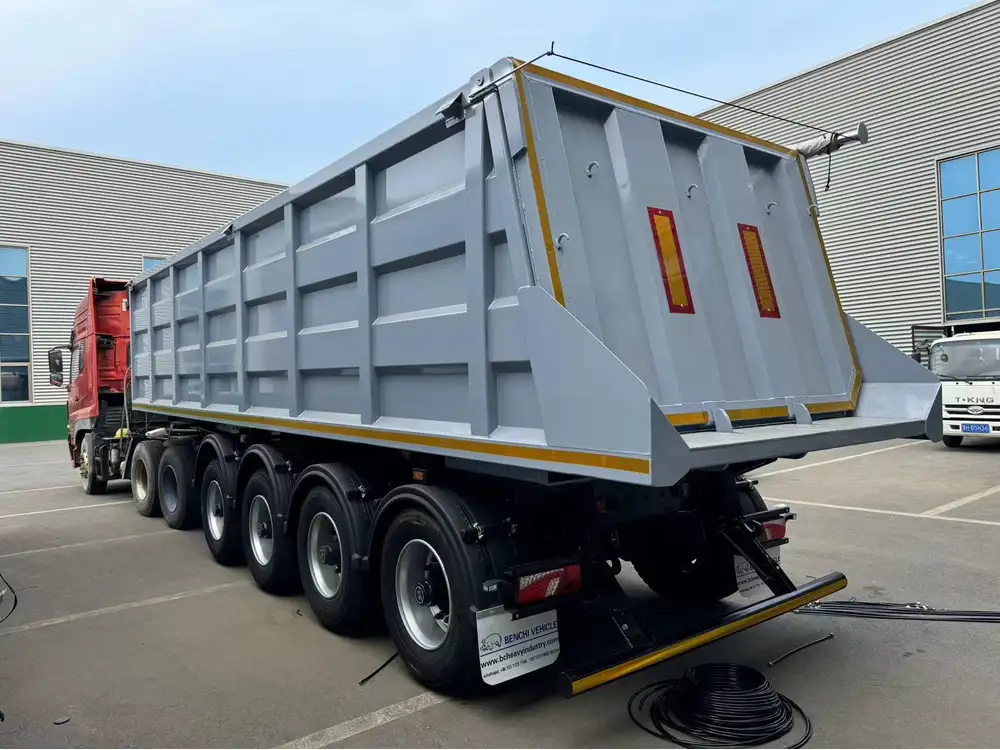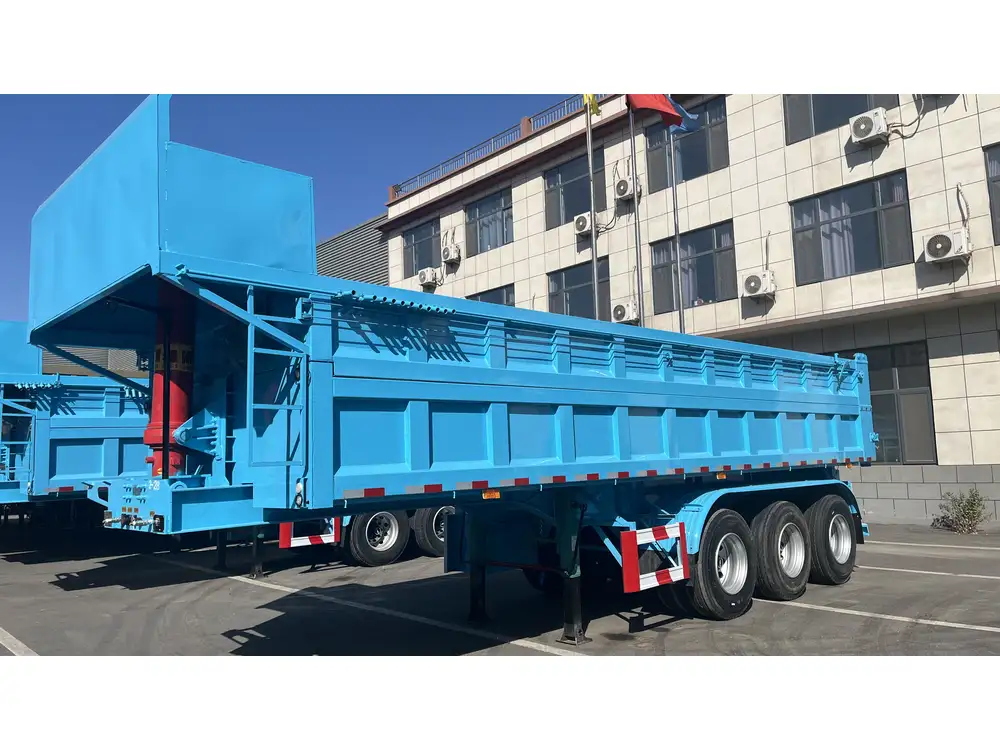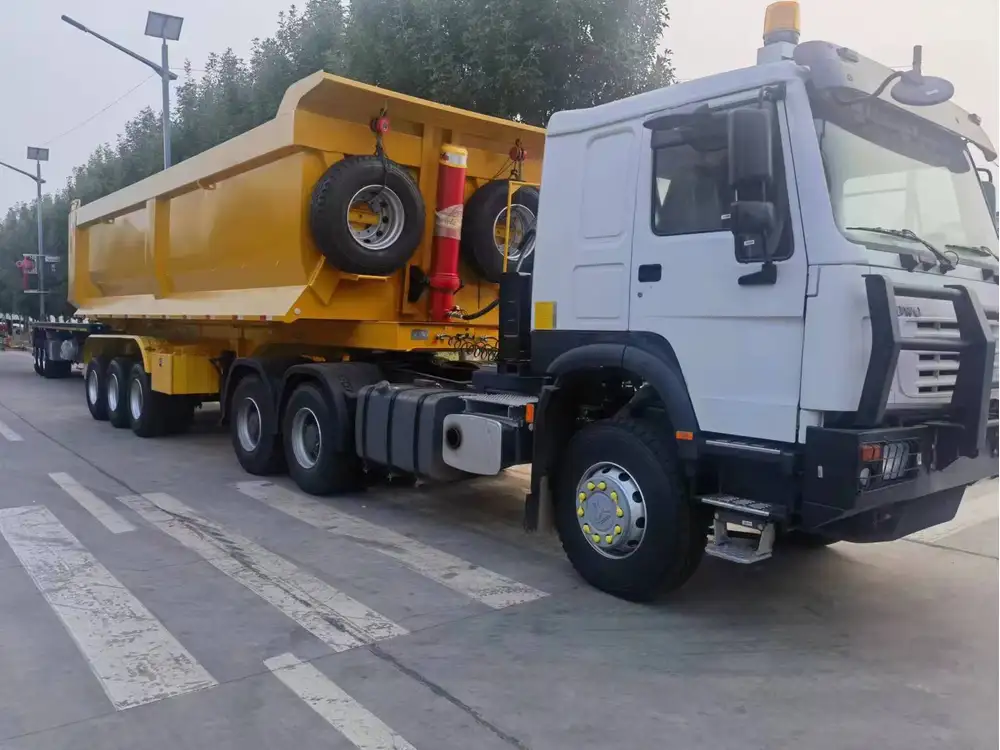When it comes to choosing the right equipment for your transportation needs, understanding the specifications—especially weight—is critical. This article aims to provide in-depth knowledge about the weight of side dump trailers, a specific type of semi-trailer designed for efficient unloading of various materials.
What is a Side Dump Trailer?
A side dump trailer is a specialized trailer utilized primarily in the construction and agricultural sectors. Unlike traditional end dump trailers, side dump trailers allow the user to unload materials sideways. The mechanism typically comprises two compartments that can be discharged independently, allowing for greater flexibility in unloading processes.
Key Features of Side Dump Trailers
- Multi-Compartment Design: Many side dump trailers feature dual compartments, enhancing operational versatility.
- Hydraulic Systems: The hydraulic lifting system provides the necessary power to tilt the trailer for unloading.
- Sturdy Build: Constructed from high-strength steel or aluminum, side dump trailers are built to withstand heavy loads and harsh working conditions.

How Much Does a Side Dump Trailer Weigh?
The weight of a side dump trailer can vary widely based on several factors:
- Material Construction: Side dump trailers can be made from various materials, including steel and aluminum. Generally, aluminum trailers are lighter than their steel counterparts.
- Trailer Size: Side dump trailers come in multiple lengths and capacities, ranging from 20 to 40 feet, which affects the overall weight.
- Additional Features: Options such as reinforced frames, extra axles, and added accessories can increase the weight.
Weight Ranges
Here’s a breakdown of typical weights for side dump trailers based on standard sizes:
| Trailer Type | Length | Weight (lbs) | Weight (kg) |
|---|---|---|---|
| Lightweight Aluminum | 20 ft | 8,000 – 12,000 | 3,600 – 5,400 |
| Standard Aluminum | 30 ft | 10,000 – 14,000 | 4,500 – 6,350 |
| Heavy-Duty Steel | 35 ft | 12,000 – 16,000 | 5,400 – 7,300 |
| Extra Heavy-Duty Steel | 40 ft | 15,000 – 20,000 | 6,800 – 9,000 |
Factors Influencing Weight
- Axle Configuration: The number of axles (typically two or three) can significantly alter the trailer’s overall weight. While more axles improve stability and load distribution, they also add extra weight.
- Load Capacity: The maximum load capacity that a side dump trailer can handle varies. Most trailers are designed to manage between 25,000 to 40,000 lbs (11,300 to 18,100 kg). Knowing the weight capacity helps in evaluating the appropriate trailer for your needs without exceeding permissible limits.

Understanding the Regulations and Permits
Before purchasing or operating a side dump trailer, it’s essential to understand local regulations regarding trailer weights. Overweight trailers may require special permits, and transportation laws can vary significantly based on location.
Local and Federal Regulations
- Weight Limit Regulations: Federal regulations typically impose a maximum weight limit of 80,000 lbs (36,287 kg) for combined vehicle and trailer weight. However, individual states may have more stringent rules, particularly for specific types of loads.
- Permit Requirements: For loads that exceed the legal limits, additional permits may be necessary. These permits dictate that routes be chosen based on structural capability and safety.
Benefits of Side Dump Trailers
Side dump trailers provide numerous advantages when compared to traditional dump trailers. Understanding these benefits can aid in decision-making for potential buyers.

Enhanced Efficiency
- Faster Unloading: With the ability to unload quickly and efficiently, side dump trailers save time on job sites. The dual-compartment feature allows materials to be released simultaneously from either side.
- Improved Maneuverability: By unloading sideways, operators can navigate tight job site constraints more effectively without repositioning the truck.
Versatile Applications
Side dump trailers can handle a variety of materials:
- Aggregate Material Transport: Ideal for hauling sand, gravel, or other aggregates used in construction.
- Agricultural Use: Farmers utilize side dump trailers for transporting crops, soil, and feed products.
Safety Features
Equipped with stabilizing features such as outriggers and lock-in tilt mechanisms, side dump trailers enhance operational safety during unloading processes.

Potential Issues and Solutions
While side dump trailers are highly efficient, they are not without their complications. Addressing these potential issues is essential for optimal performance.
Stability During Unloading
Issue: Side dump trailers can become unstable if not properly unloaded.
Solution: Operators should ensure the trailer is on solid ground and use stabilizing aids such as outriggers when required. Following all operational guidelines is essential to avoid tipping.
Maintenance and Durability Concerns
Issue: Regular wear and tear on hydraulic systems and trailer frames can lead to mechanical failures.
Solution: Routine inspections and preventative maintenance, including checks of hydraulic fluid levels and frame integrity, are necessary to maintain the trailer’s lifespan and performance.

Proper Loading Techniques
Issue: Improper loading can lead to excessive weight on one side, causing instability during transport.
Solution: Distributing the load evenly across the trailer’s compartments is crucial. Advanced techniques may involve using load distribution software or tools.
FAQs About Side Dump Trailers
How Do I Choose the Right Size?
Consider your typical load requirements, the type of materials you will transport, and the terrain you’ll be working on. Consult with manufacturers to determine optimal sizes for specific applications.

What Maintenance Does a Side Dump Trailer Require?
Regularly check hydraulic systems, inspect the frame and tires, and clean the trailer after each use to prevent build-up of residues from materials transported.
Can I Use a Side Dump Trailer for All Types of Materials?
While they’re excellent for many materials, examine the compatibility of specific materials with the trailer’s design and hydraulic capabilities. Consult with the manufacturer for recommendations.
Conclusion
Understanding the weight of side dump trailers and their operational features is crucial for maximizing efficiency in transportation. These trailers offer a complex array of benefits, from increased unloading speed to enhanced stability. By carefully examining specifics like weight, load capacity, and best practices for maintenance, businesses can reap significant advantages in construction and agricultural operations.
In summary, whether you’re a seasoned professional or a newcomer in the transportation industry, leveraging the insights provided in this article will help you make informed decisions that align with your operational needs and regulatory requirements.



